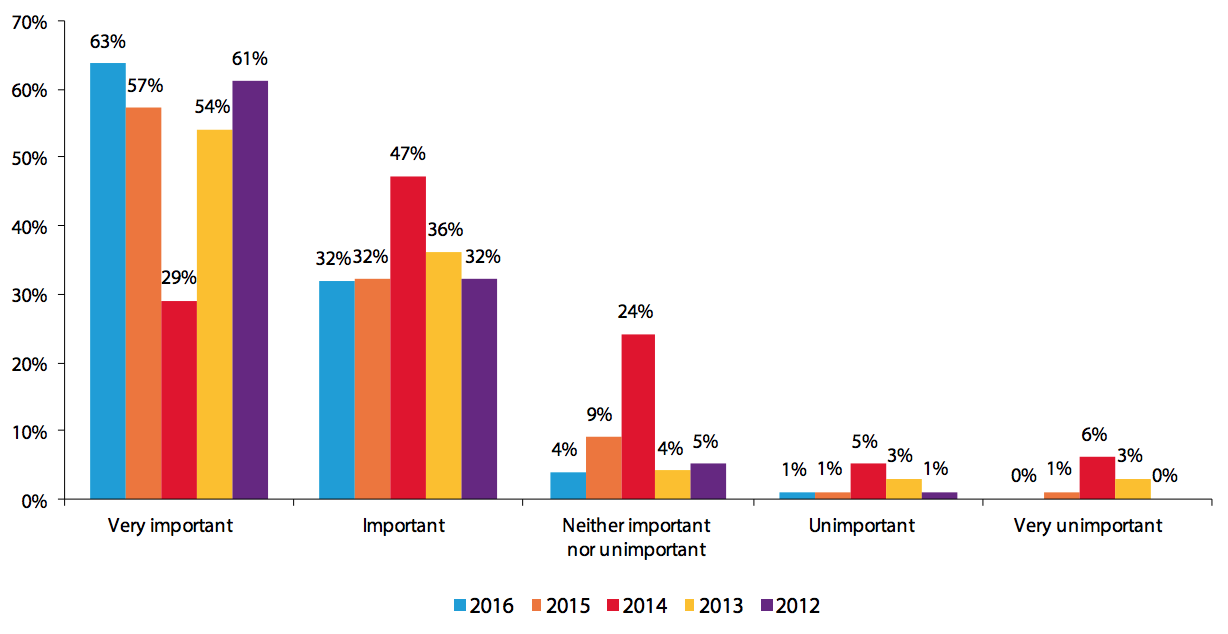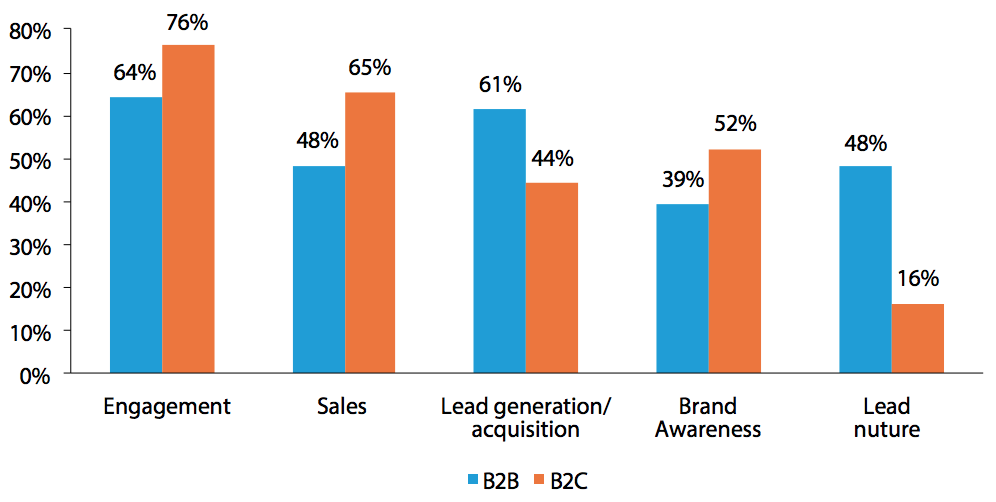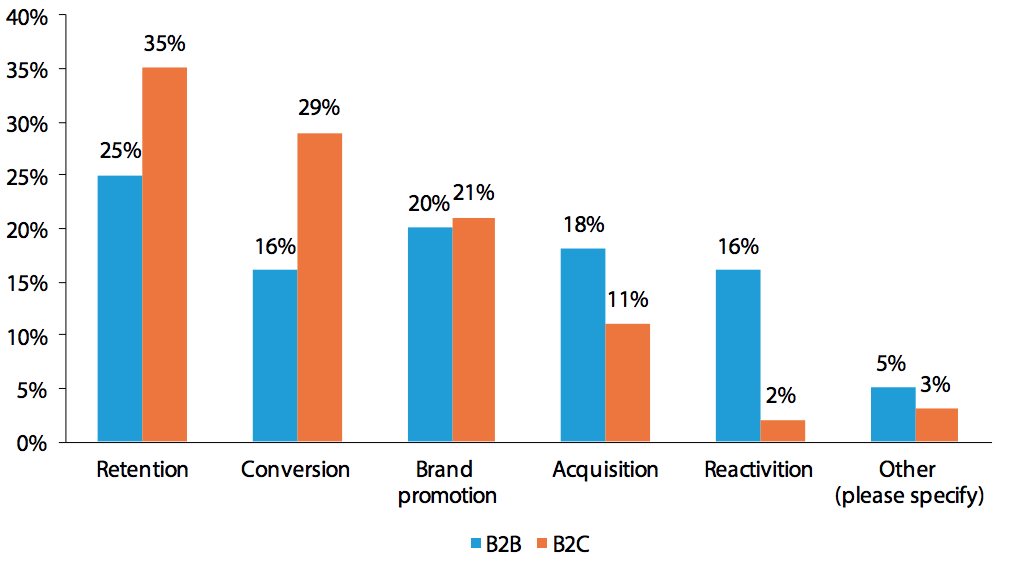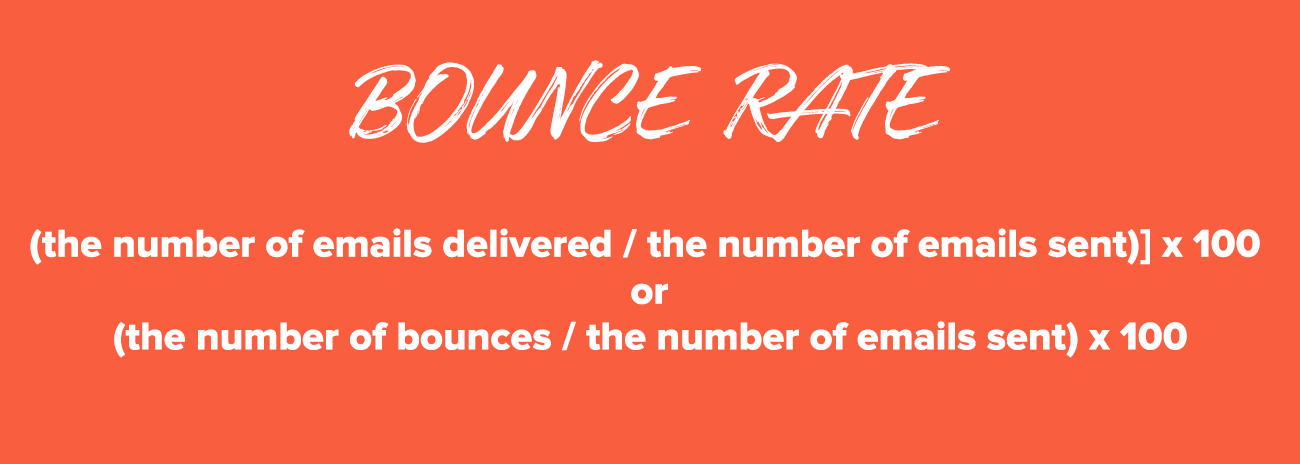When looking at different online services to get the attention of your (potential) customers and how you can interact with them, email is still king. (although chatbots are the upcoming rising star).
Marketing Sherpa even researched the ROI of email marketing, and 60% of marketers believe that email marketing is producing a positive ROI.
In the 2017 study of the Direct Marketing Association (DMA), you can see this importance of email marketing coming back again for all organisations.
When asked “Strategically speaking, how important is email marketing for your organisation?” these were the answers:

So you’ve started to build a list for your business, you started sending out emails to your list. Of course, you’ve followed all the best email marketing practices. Your emails are targeted correctly, they are useful to your audience and bring lots of value in the form of how-tos, links and videos.
Basically, you think you’re doing an outstanding job.
Or are you?
If you want to be sure that you’re doing a great job, you need to start tracking your results. And the only way to begin monitoring and understand what you need to start tracking you need to identify goals, the metrics to follow for those particular goals and then using that knowledge to adjust your campaign until you see that needle moving in the right direction.
Table of Contents
Identifying the goals for your email marketing campaigns
If you don’t know what you’re looking for, you will never find it. That is where goal setting comes in.
Looking back at the study from the DMA, the top three uses for email marketing are; engagement for 71%, sales for 58% and lead generation or acquisition for 52%. Less than half of their respondents (47%) said it was brand awareness and 29% said it was lead nurturing:

A second thing to take into account in this is the question In your experience, what is email best used for?

Overall, marketers say email is best for retention (31% chose this), followed by conversion (24%), brand promotion (21%), acquisition (14%) and reactivation (8%).
So what are your goals you want to achieve using email marketing?
Is it to grow your subscriber base? Is it to generate more leads? Is it to convert more existing subscribers into consumers?
Whatever goal you decide is relevant for your business though, there needs to be a metric attached to it so you can track your progress towards that goal.
Overall, even though there might be the bigger, more fuzzy goals to achieve like engagement and brand awareness. You can look at your goals from two different perspectives; on the macro and micro level.
Micro goals help you to identify the success of individual emails, while macro goals measure the success of the entire campaign.
For example, macro goals can be to increase your overall sales by 15% (you want a goal you can measure, this way you can look at the sales before and after you did a particular campaign to see if indeed your sales increased by 15%).
If you want to reach that macro goal, however, you will need to achieve several micro goals. For these microgoals you can ask yourself questions like:
- What do I want to have the person reading this email do?
- Do you want the reader to click a link in your email?
- Do you want the reader to buy a product?
- Join your online community where they can talk with other customers?
- Email you with feedback about your product?
You need to choose one actionable, measurable goal and based on that goal you can start to create the email that encourages the action.
What are Key Performance Indicators (KPIs)?
Before we dive any deeper, let’s first go back to the basics. What are KPI’s precisely?
According to Wikipedia, they are:
A performance indicator or key performance indicator (KPI) is a type of performance measurement. KPIs evaluate the success of an organization or of a particular activity (such as projects, programs, products and other initiatives) in which it engages.
But that still doesn’t say that much is it?
Key Performance Indicators (KPI’s) are the critical (or key) indicators on how you’re progressing to results that you want. KPI’s help you to give the numbers you need to make the correct decisions and help focus your attention on what matters most.
As famous management consultant Peter Drucker used to say: “What gets measured gets done.”
Part of using KPI’s is setting targets and figuring out ways to track the progress towards those targets. Not anything that you can measure or want to measure can be a right KPI though.
Bad KPI’s
For example bad KPI’s are:
- metrics that can be directly manipulated by you. Although everyone wants to have the best for their organisation, there can always be something that makes you manipulate the numbers if you can and your job is on the line. For example, when a KPI is the amount of cold-emails sent, you can just start sending random cold emails to non-qualified leads in order to hit the target
- KPI’s that are to narrow. Let’s say you own multiple stores, you would not want to use the metrics of just one store the measure the success of your entire business now would you? The same holds true for digital email marketing, just focusing on one channel without attributing another channel makes you lose the complete picture
- KPI’s that are based on lagging indicators. Some metrics don’t update quickly enough, it doesn’t reflect changes in your business until maybe days or weeks have gone by. Because of the time delay these KPI’s have, it will be too late before you know what is happening.
Good KPI’s
Good KPI’s are:
- Metrics that measure customer-driven events. Since you can’t really manipulate customer behaviour, customer-driven metrics as a result are the best. They are pure and uninfluenced. For example, you can convince people to go to your webshop, but you can’t force them to buy anything from you. As a result total customer purchases and revenue are super KPI’s.
- Metrics that are consistent. If there are things that may fluctuate heavily, you should not use these as metrics. A good metric is consistent over time to you can see the overall picture, compare results back to results in the past etc. As a result, you can use past indicators as indicators to try to predict the future, which makes them even more powerful.
- Metrics that are based on leading indicators. The opposite of lagging indicators, so metrics that anticipate or predict future changes in your business. As a result, you can stay ahead of your problems and anticipate. For example, a good leading indicator might be the number of new signups. Although this doesn’t say much directly about the revenue, you can use these as a lead indicator that things are moving into the right direction (because you need signups before you can start to sell for example).
What stage is your business in? What is your Business Model?
Every stage of a company comes with a different set of company goals. What is important for your business in your particular company’s phase is probably going to change over time. So you need to make sure you update your goals and KPI’s regularly and keep track of all the right metrics at the stage of your business growth.
The way your company makes money has a high impact on how you make your KPI selection, primarily because with most businesses they are not in the business of selling emails. As a result, emails only contribute to your company’s revenue.
Most online business can be put in any of the below three different buckets on making money.
Lead generation sites
Sometimes you’re selling a physical product, but most of the times you’re in the business of selling software or services. Before someone buys from your company though, you need to turn those anonymous visitors into prospects. Gathering their name and email address (maybe even their phone number if you need to have that even more personal contact before you can do a sell).
Business like this, of course, need engagement with the emails, but you shouldn’t just measure, email opens.
Does an email open correlate to monthly sales?
If your company needs leads to turn into clients, try focusing on conversions into actions. Someone filled in a form to download a whitepaper; you’ve sent the whitepaper via email and what happens next? Do they convert more and ask for a product demo?
It is these kinds of deeper level engagement, that will result in new business for your company.
Content creation sites
If you’re in the content business, you probably offer free content and generate revenue from sponsored content, display advertising, memberships or a combination of the three. For companies like this, engagement is king.
The more content people consume, the more impressions from display ads and the more clicks on sponsored content your company can get.
Depending on what type of content you’re offering to your customers, the kind of engagement you can measure might be slightly different though. Email marketing KPI’s for your business is all about clicking through to your content and staying there, “seeing how deep the rabbit hole goes” and going from one piece of content to another.
The email frequency for businesses like this is potentially a lot higher as well, not just once per week, but sending out emails every day with the latest and greatest.
You need to be aware though that customers don’t get fed up with you, open rates start to plummet or that people are slowly reporting your content as spam.
Loyalty driven metrics like frequency of email opens, duration on site after clicking through and duration since the last clickthrough might also be important KPI’s to measure in addition to overall open rates.
Ecommerce
Unlike lead generation, these types of business are not selling software or services, but mostly physical products through a shopping cart platform like Shopify and others. Pure engagement matters if your company is operating in this space, but not entirely the same as with lead generation business.
You might have fully engaged subscribers who are opening all your emails, but are not checking out and entering their payment information on your website, these people are engaging, but it won’t result in a sale.
Metrics like the cart abandonment (with the proper follow-up email) and average order values are essential, but also customer loyalty and lifetime value are important metrics to focus on in your business. Is someone only using your business once because you had a good deal or are they staying for the long term?
Email can help build that relationship and make sure you can decrease the number of abandoned carts and create that long term commitment.
Four steps to success
No matter which type of business you have, examine the current state of your business to get a clear overview of what is ahead. Use this information to align your email marketing strategy with your business objectives and use KPI’s to measure the performance.
This can be done using just four steps:
Step 1: Have a focused strategy for growth with key milestones and stages. Do not broadbrush and try attack many market segments. Pick one sizeable niche and focus all of your company’s efforts here.
Step 2: Take each stage and decide what activities/behaviours will drive progress through that stage. Our favourite here is coming from the Pirate Metrics. The name “Pirate Metrics” comes from the AARRR (say it aloud to yourself, and it will all make sense) acronym, which stands for Acquisition, Activation, Retention, Referral and Revenue. These summarise the different stages of the customer lifecycle for an online startup, to define the various stages on which your customers can be in.
Decide what metrics define success and completion of that stage.
Step 3: The KPIs you need to measure both in activity and outcomes will come from Stage 2. Form targets around these for key individuals or teams.
Step 4: Execute, measure and review periodically – activity can be measured weekly – outcomes often better to be measured monthly.
Tie email KPI’s to your business goals
Now that we figured out what your business model is, and at which stage your business is. We also know the four different steps to go through to get succes for your company, it becomes time to tie different types of email KPI’s to your business goals.
What are the business goals that underpin your email marketing strategy? What is the planned outcome of your campaigns and the reason for investing time and money in execution?
Business goals differ from company to company. But more often than not, goals involve these areas.
ROI
There are hundreds of KPI metrics. The trick is to find the ones worth tracking. To do that, you need to understand your business goals and find the right KPIs to track your progress. Only then will you be able to see the reason behind each campaign and the logic behind the analytics.
ROI can be calculated in general by dividing the gain from your investment minus the cost of your investment by the cost of your investment:

Return On Investment: (gain from investment – cost of investment) ÷ cost of investment
Revenue
Revenue for any business is the amount of money that comes into a company by doing doing their business. It is always best practice to look at revenue from different sources, which parts of your marketing efforts are bringing in the most revenue?
As a result, you should be looking at the total revenue generated from your email marketing campaigns (all the way from individual email marketing campaigns, to loyalty programs, reactivation campaigns, etc.)
Qualified leads
Someone does not become an ambassador for your brand out of the blue; the entire Buyers Journey works like a funnel. The more into the buyer’s journey, the fewer people on average are still left.
The only way to move people down this funnel is by having people arriving into the funnel at the first place.
In the early stages of your marketing funnel, your main objective should be to generate as many qualified leads as possible (people who would benefit from using your product or service).
By tagging the people how they arrive in your marketing funnel, you can measure which of your activities are generating the most qualified leads, all so you can make better decisions on how to grow and build your email marketing list.
So be sure to label people coming in from different forms, different campaigns, so you can track in your email marketing software which activities are generating the best leads.
Cost per acquisition
Leads are never free. You either need to invest time in creating content or money in placing ads to drive traffic. So how much does it cost to acquire a paying customer? This one together with the Lifetime Value of a customer can help you to decide whether your current investments are worth it, or that you maybe should be focusing on different promotional campaigns.
By tracking the links from your campaigns and the number of customers and qualified leads it generates you can figure out whether to keep on investing or not.
Sales
The last business goal you need to keep in mind when analysing the impact of your email marketing strategy is the sales goal. By looking at things like traffic source (always include tracking tags when you send out email campaigns), click-through rates and conversion, you can see the impact your email had on sales.
If you have a separate sales department, be sure to check in with them too for daily/weekly/monthly sales updates and how email marketing affects those sales.
What KPI’s to start tracking?
Most Email Service Providers offer the same type of tracking, so the below items must be available no matter which tool you’re using. For all the different KPI’s you can track we’re going to show you the definition of the KPI and how you can calculate it, what type of goal it measures, and how you can improve the KPI’s in case the numbers are not what you’re expecting.
Open rate
The first one we’ll be looking at is the Open Rate. The open rate is most of the times the first item you will be looking at, after all, you’re sending email for people to open them right? The open email rate tells you if the people subscribed to your list are interested enough to open your emails and read the content of them.
You can calculate the open rate as follows:

Open Rate: (number of (unique) email opens / number of emails sent) x 100
The higher the open rate the better of course, and although percentages different per industry, you should always try to aim for it to be at least around 20%. If it is lower than that you might need to focus on how to improve those numbers.
An excellent open rate of an email campaign, lets you figure out if the way you write your subject lines and email preview text are engaging enough.
The sole purpose of the first sentence in an advertisement is to get you to read the second sentence of the copy, is what Joseph Sugarman already said years ago in his book “Advertising Secrets of the Written Word”.
This is not only true for advertisement copy, but also for your email subject lines, make them enticing enough that people want to open that email and continue to read the contents, make it stick out in their inbox.
If your open rates are low, it could also mean that your email ended up in the spam filter or the “promotions” tab in Gmail.
You can improve your open rates in a couple of different ways.
- By looking at the subject line, sender name, and preview text. Do split tests to make sure that your copy is indeed the most engaging copy they want so that they start opening your emails.
- Ask your subscribers to add your sender email address to their address book, this way there is a lower chance of your emails ending up in the promotion tab or spam box
- Clean-up your email list with people who never open your emails. If someone is not opening ten emails in a row from you, there is a high probability that they are not interested anymore. Do a re-activation campaign to try to get them back and otherwise delete their name from your email list. If you keep your list up-to-date email providers will reward you by having a significant lower spam score.
Bounce rate
Not all emails will make it to the inbox of your subscribers; the bounce rate helps you to see what percentage did not make it to the inbox of your subscribers.
Calculating can be done by either:

Bounce Rate: (the number of emails delivered / the number of emails sent)] x 100 or: (the number of bounces / the number of emails sent) x 100
Within bounced emails there are two types of bounces:
Hard bounce
If someone left the company they were working for, and the email address is deleted, or there are other reasons why the email address doesn’t exist anymore, you will get a hard bounce. It could be that the domain name doesn’t exist anymore, or the mail server on the other end has wholly blocked you.
A hard bounce is a failure to deliver your emails because of a permanent error
Soft Bounce
Unlike with a hard bounce, a soft bounce is not a permanent error. The email server on the other end could be down, maybe the mailbox of the recipient is full (over quota), or perhaps the email message was too big.
No matter what it is, it is usually a temporary error though. However, most email service providers (ESP) will still keep track of it, and if one address has a soft bounce for a certain time, they will move that one over to the hard bounce pile.
No matter how you look at it though, a bounced email is an email that failed to get delivered, and it is something to worry about.
You can improve your soft bounce rate by:
- If people have too many soft bounces happening on their email address and your ESP does not automatically remove these addresses, do this by hand. The email providers who are receiving your email don’t like a lot of soft bounces, and they might start to flag you as spam
To prevent hard bounces:
- Make sure to have a double opt-in process; sometimes people misspell their email address when registering and you can immediately filter out those.
- Do a regular cleanup of your lists, services like Verify by Voila Norbert can help you remove the email addresses that are not valid (anymore)
Unsubscribe rate
No matter how hard you try, there will always be people that won’t love you as much anymore as the moment you first started your relationship. This is the same in life, as in email marketing.
So don’t worry about people unsubscribing after you’ve sent them an email campaign.
The amount of recipients of a campaign who hit that “unsubscribe” button is referred to with “unsubscribe rate”.
MailChimp has some great statistics online including the average unsubscribe rate per industry. (for example 0.26% for the marketing industry) Be sure to check what the averages are for your industry, if you notice that unsubscribe rates are higher than the average for industry there might be something wrong.
Maybe you’re sending your newsletter to often, or you did not segment your list properly and your content is not relevant to them.
If it keeps going up, it’s time to have a hard look at your strategy.
Lastly, make sure to include a button for people to unsubscribe in every email you’ve sent, maybe put a question on the unsubscribe page to learn why they are unsubscribing, but whatever you do, make it easy for your subscribers to end the relationship on their turns.
Having someone unsubscribe is always far better then them hitting the “mark as spam” button.
Spam complain rate
Just like having people unsubscribe from your newsletter, it is also perfectly normal for people to complain. In the case of email marketing, most complaining is not happening by sending a reply, but by hitting that “mark as spam” button.
There are a lot of different reasons why people want to do this, maybe they’ve just got a lot of different (bad) emails and yours is right in the middle of them, maybe it has been a long time since you’ve last emailed them and they forgot you’ve subscribed them in the first place, maybe they are just having a bad day.
No matter how they are feeling, this number is even more crucial then the unsubscribe rate, since this might be affecting all future delivery for all your customers. So how do you lower the complain rate?
Start by making sure that the people on your list are confirmed with an opt-in. You can do this by having a confirmation email send the moment they sign-up in which they have to confirm their subscription. This does not mean people won’t forgot that they’ve ever subscribed to you, but it already stops the amount of people subscribing by accident.
Don’t use sneaky subscription methods, yeah sure you can grow your list quickly by having them automatically subscribe the moment they place an order or leave a comment on your website.
Not only is this illegal (especially in Europe with the General Data Protection Regulation or GDPR in place), but it also is super annoying to begin with, so easier for people to start complaining.
Lastly also don’t send too many emails. Just because you have the permission to send someone some emails to someones inbox doesn’t mean you should extend your welcome and send twenty emails per day.
The amount of emails that are acceptable varies per person and per industry, be sure to test yours over time.
Conversion Rate
The last email marketing KPI we will be looking into is the Conversion Rate. The Conversion Rate is the percentage of subscribers who clicked a link in your email campaign and completed a specific action on the website linking from the Call-To-Action.
Think of things like filling out a form, or purchasing a product.
You can calculate it very simply:

Conversion Rate: (number of people who completed the desired action ÷ number of total emails deliverd) x 100
If you want to figure out the number of people who finished taking a desired action, you’ve got to make sure you can track the actions people take on your website after clicking on the links in your email. The simplest way to do this, is by implementing Google Analytics.
Your Email Service Provider can track the number of emails delivered and Google Analytics on your website can show you the number of people who completed the desired action. Make sure to include campaign specific UTM tags on the links in your email so you can track the conversion of each different campaign.
That’s it. In this guide we let you discover everything about KPI’s, what are good KPI’s, what are bad KPI’s. How can you tie KPI’s to specific business goals for your company and we gave you the five essential email marketing KPI’s you should be tracking.
Data monitoring and analysing is fundamental for each part of your business so it makes sense to start implementing these straight away to see how your email campaigns are performing. Are the emails working? Who are your most engaged customers? What are the things you can do better.
You’ve got all the information available to start straight away, make sure to dig into the information your Email Service Provider (and website analytics software) can give you, learn and improve.
What metrics do you think are the most important for your company and your email campaigns? Leave a comment below!

